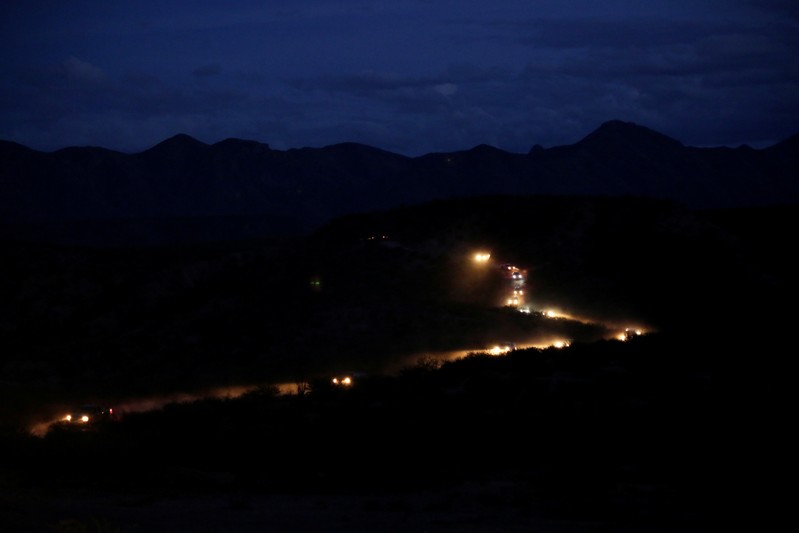
Andrew Hsu, a founding partner of DoubleLine Capital, speaks during a Reuters investment summit in New York City, U.S., November 7, 2019. REUTERS/Lucas Jackson
November 8, 2019
By Saqib Iqbal Ahmed
NEW YORK (Reuters) – Don’t expect negative interest rates to be the next U.S. import from Europe or Japan, as those two economies are providing a real-time cautionary tale of the pitfalls of central bank stimulus efforts gone awry.
That at least is the view expressed this week by fund managers and strategists at the Reuters Global Investment Outlook 2020 Summit. They argue that the long-lasting and corrosive side effects of below-zero interest rates – which punish savers, destabilize the banking sector and encourage systemic risk-inducing financial engineering – far outweigh the benefits of governments and other big debtors being paid to borrow.
Some $12.5 trillion of bonds globally – and fully 30% of the developed world’s sovereign debt – sport negative yields, thanks to central bank policies from the Bank of Japan and European Central Bank, which are desperate to revive growth and inflation.
Among other consequences, that also leaves a deficit of investment income available to support an aging population that desperately needs it, according to a recent blog post by BlackRock.
Blackrock and other investors say the U.S. Federal Reserve under Chairman Jerome Powell, which is in the midst of an in-depth review of its own operating framework, has been closely observing this risk-reward imbalance overseas and is keen to avoid it.
“When you listen to Powell and other representatives of the Fed, they don’t want to takes rates negative,” said Dan Ivascyn, group chief investment officer at bond giant Pacific Investment Management Co.
“It will be well down the list of the tools that they use,” he said.
Central banks in the euro zone and Japan have slashed interest rates below zero to boost inflation and economic growth, raising a debate about the ammunition other major central banks such as the Fed have to fight a slowdown.
The Fed late last month cut its key overnight lending rate by a quarter of a percentage point to a target range of between 1.50% and 1.75%.
U.S. President Donald Trump has suggested that the Federal Reserve drive interest rates into negative territory as a way to allow the U.S. government’s to refinance its $22 trillion in outstanding debt and lengthen the amount of time over which it is repaid.
That however, is unlikely to happen, fund managers said.
“Never say never, but there is a real hesitancy here in the U.S. to take rates below the zero bound,” said Greg Peters, head of multi-sector and strategy at PGIM Fixed Income.
“I think the U.S. has had the benefit of seeing the implications of negative rates elsewhere,” he added.
Negative interest rates have a checkered track record in spurring lending and boosting business investment and consumer borrowing and spending.
Negative rates put downward pressure on the entire yield curve and narrow the margin that financial institutions earn from lending. Critics of negative rates argue that if prolonged ultra-low rates hurt the health of financial institutions too much, they might refrain from lending and damage the economy.
Negative rate policy is something Fed officials have downplayed as appropriate because of the risks it entails and the likely political opposition.
“They are much more focused on some of the costs to negative rate policies,” Pimco’s Ivascyn said.
Anne Mathias, a global rates and FX strategist at asset manager Vanguard, also said negative policy rates are unlikely.
“I definitely do think that if we go into a recession at some point, which I am sure we will, we will just go back to quantitative easing and expand the balance sheet again,” she said.
For Richard Bernstein, chief executive of Richard Bernstein Advisors LLC, negative rates imply a “bone-crushing recession.”
“I actually don’t think we are going to see negative rates because I don’t think we are going to get a bone-crushing recession,” he said.
Andrew Hsu, co-portfolio manager of the DoubleLine Total Return Bond Fund, <DBLTX.O> warned about the side effects of negative rates.
“If we had negative rates for the next 10-20 years… no one in this room will be able to retire,” he said.
“To the extent that the U.S. could avoid that, I think it is certainly going to try, but at what expense? Are you willing to go into a very severe, deep recession? We will see,” said Hsu.
Rick Rieder, chief investment officer of Global Fixed Income at BlackRock Inc <BLK.N>, said he did not think the Fed would ever go to negative rates.
“I think Congress would give them a hard time on doing it. I think there is a momentum and a movement in the world about how negative interest rates don’t work,” he said.
Relying on zero or negative rates would be “counterproductive as it would catalyze a collapse in sentiment and a concomitant rise in household savings rates,” Rieder said in a recent blog post.
“In the corporate sector, negative rates incentivize superfluous leverage and financial engineering, and keep zombie companies alive in an already well-supplied system.”
(for other news from the Global Investment Outlook 2020 Summit, click on http://www.reuters.com/summit/investment20 http://www.reuters.com/summit/investment)
(Reporting by Saqib Iqbal Ahmed; Editing by Megan Davies, Dan Burns and Dan Grebler)

